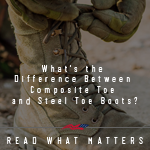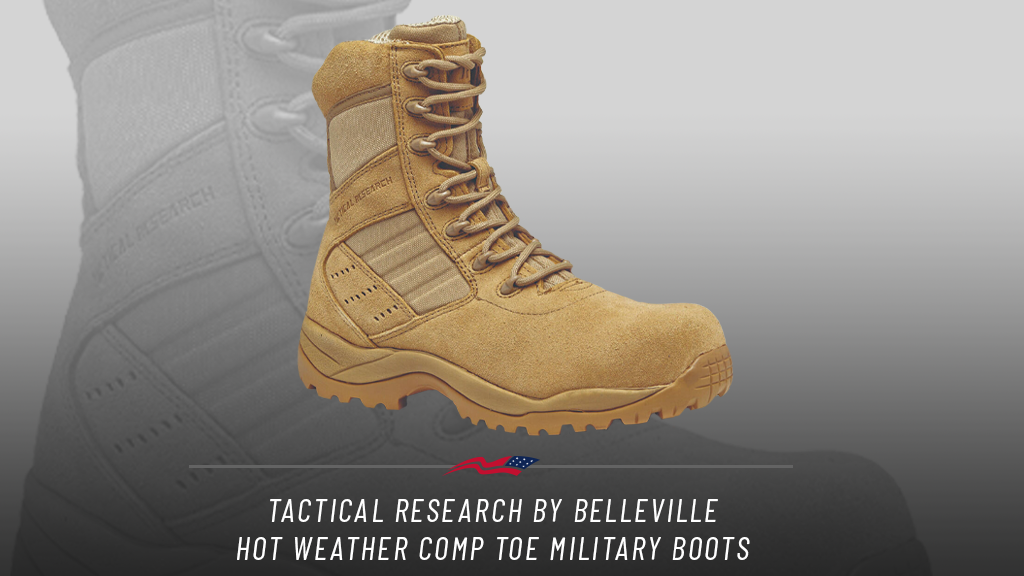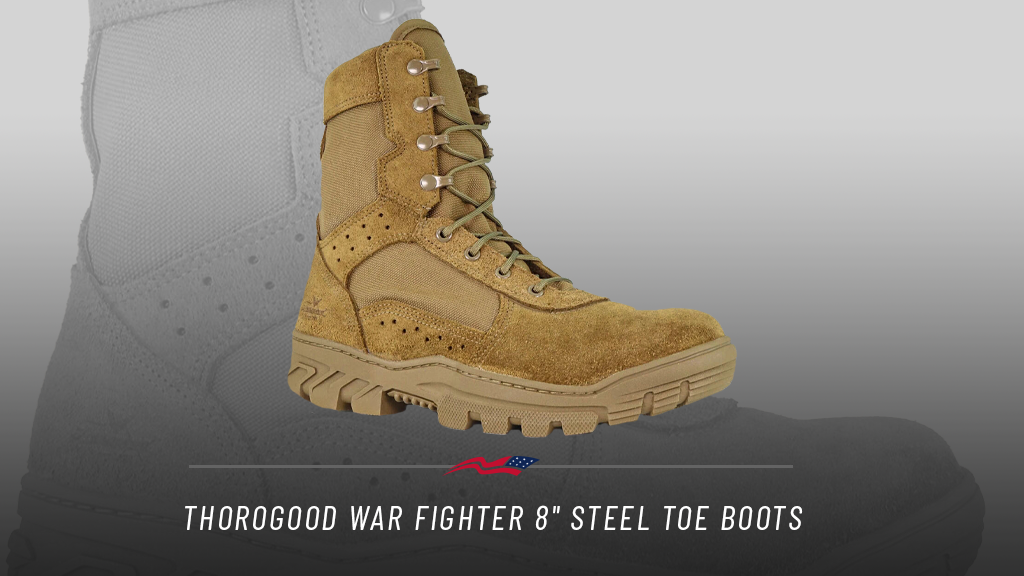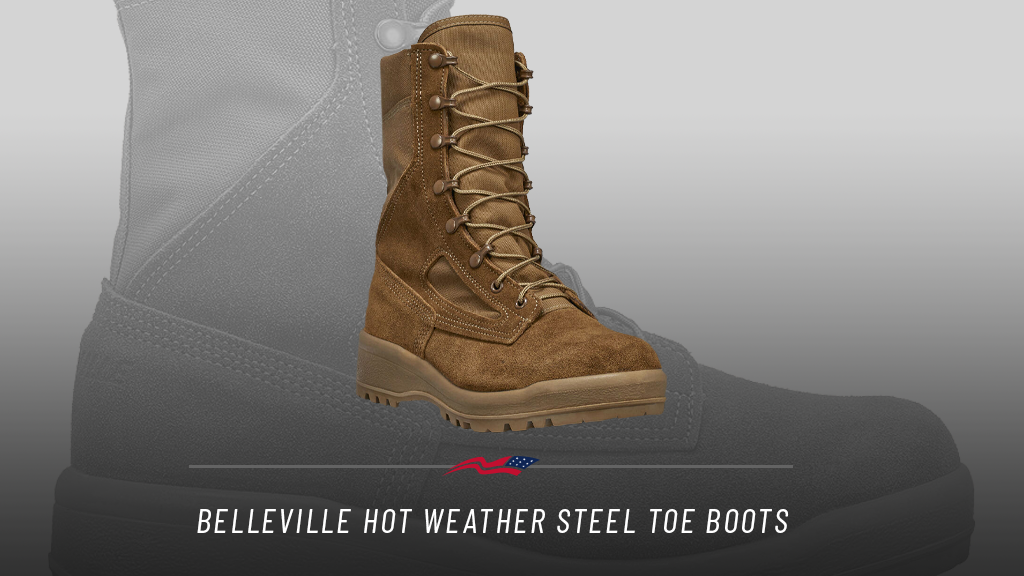 If you work a tough job in the military, law enforcement, or even as a civilian, chances are you’re going to be required to wear a safety toe boot. But should you choose a composite toe or a steel toe? We’re breaking down the differences between the two of them so you can understand which will give you better protection for your job. Granted, some jobs require steel toe specifically with no option for composite toe.
If you work a tough job in the military, law enforcement, or even as a civilian, chances are you’re going to be required to wear a safety toe boot. But should you choose a composite toe or a steel toe? We’re breaking down the differences between the two of them so you can understand which will give you better protection for your job. Granted, some jobs require steel toe specifically with no option for composite toe.
Composite Toe Boots
Composite toe safety boots are made from a mixture of plastics, carbon fiber, fiberglass, aramid, and Kevlar, and pass all the same safety requirements that steel toe boots endure. They also have some other benefits that we’ll explore.
No metal
There’s no metal in composite toe boots, which means you can wear them through metal detectors at security checkpoints without having to remove them. If that type of checkpoint is something you encounter regularly, a composite toe is a superb choice for you.
Lightweight
Steel is a powerful material, but it’s heavier than a composite blend of materials. That means if you go with a composite toe, you’ll benefit from losing a little of the weight from your boot. It might not sound like a big deal, but when you’re out working long shifts, even an ounce can make a difference by the end of the day.
Extra wiggle room
The internal toe box in a composite safety shoe is usually a little thinner than one made of steel, which means you have a little more room to move your toes around. Having that extra room can add a lot of comforts—especially if your feet swell when you’re standing for long periods.
Insulation
Steel doesn’t offer any insulation from the cold, so if you’re working outside in winter weather, a composite toe is going to be more comfortable. Furthermore, steel tends to hold cold temperatures in your boot while composite material isn’t affected by frigid temperatures.
The downsides
One serious downside of a composite toe is the chance that it could compromise them after one solid blow. Even if they look like they’re still in good shape, they might not offer full protection next time, so it’s best to just replace them. Tests will show that those boots are less resistant to impact.
Another unexpected downside is that they are more bulbous in shape than a steel toe. The blend of materials used is going to keep your toes safe, but they need more of it to keep them in line with standards. While it’s not the most noticeable thing, it is definitely worth mentioning.
Steel Toe Cap Boots
Steel toe construction has traditionally been the gold standard for safety boots, and it’s easy to see why. Some units and jobs require steel toe over composite toe as well.
Profile and Construction
Steel is stronger than composite material blends, giving them the ability to have a slim design and a contoured profile. They don’t always need to scream “WORK BOOT”, companies have the ability to design it as more of a presentable boot.
Maximum coverage
If you’re working in construction or with heavy machinery, chances are most of your coworkers are sporting steel-toe work boots. Why? Steel is extremely strong and this type of boot offers great protection against impact, punctures, or crush injuries.
The downside
One of the biggest downsides of steel toe boots is that they’ll set off metal detectors. If you’re at a job that requires you to go through security often, having to take your boots off constantly can end up being a pretty big pain. In addition, many steel toe boots will be magnetic, so they’re a no-go if you work near powerful magnets.
Can steel toe boots cut off my toes and can they get me electrocuted?
You may have heard the myth that if a steel toe boot gets seriously crushed or impacted, it will bend down and cut off your toes. That sounds like a good reason to switch to composite, right? Not so fast. This is a complete myth—in fact, steel toe boots are usually able to hold up to repeated impacts for longer periods than composite toe boots. MythBusters even did an episode on it and couldn’t create a scenario where the boots would sever your toes.
While they are metal, OSHA doesn’t consider this toe style to be hazardous and is completely safe to wear, even by electricians. As long as the conductive materials are not exposed or in direct contact with your feet, there is not much of a risk to the wearer. However, wearing the composite blend completely negates that risk.
Once you know what type of toe box you need and the working conditions, you’ll need to look for the right boot. That’s where U.S. Patriot can assist!

This post has affiliate links, which means we may earn advertising money if you buy something. This doesn’t cost you anything extra, we just have to give you the heads up for legal reasons. Click away!









